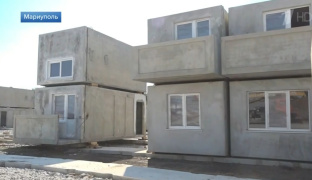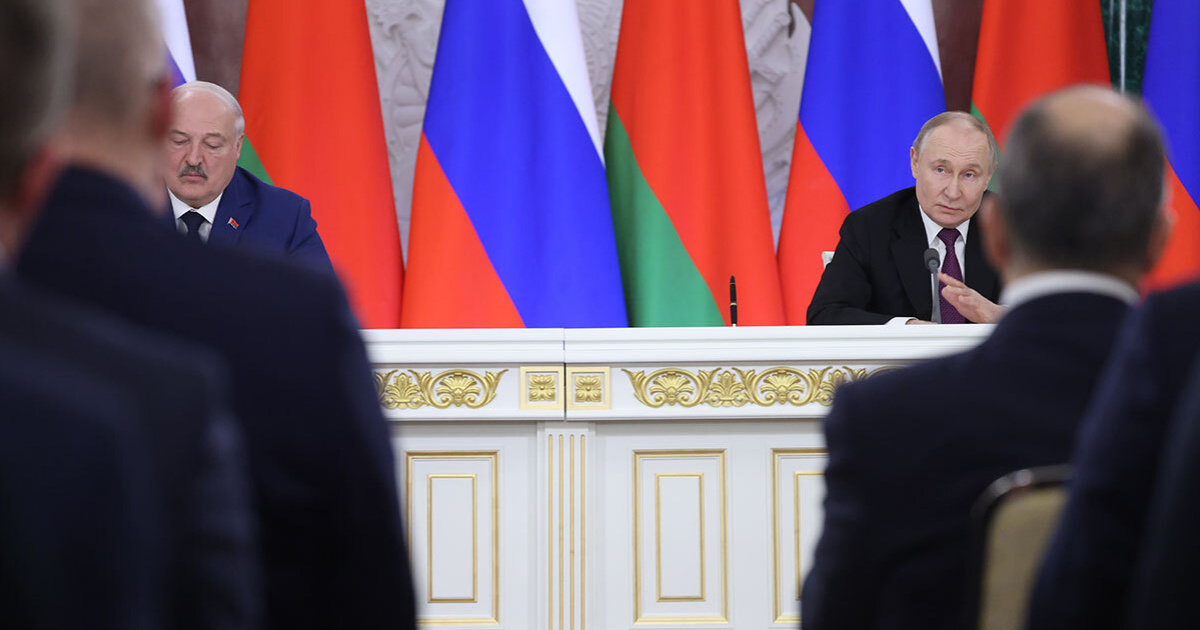The kremlin regime has officially classified the civilian population in the occupied areas of the Donetsk, Luhansk, Zaporizhzhia, and Kherson oblasts as second-class citizens, establishing lower coefficients for the subsistence minimum for them. Nothing else was expected from the occupiers.
Strangers among "their own"
For the current year, the subsistence minimum in the Donetsk and Luhansk oblasts is set at 0.78 of the federal level, and for the Zaporizhzhia and Kherson oblasts, it's 0.81. The budget proposal for 2024 anticipates an increase to 0.94 for the Donetsk and Luhansk and 0.97 for the Zaporizhzhia and Kherson oblasts.
However, even officially in moscow, they admit that the "new regions" will not catch up with the overall standard of living in russia for at least 7 years. This task has been assigned to the russian government by the kremlin dictator.
By the way, to achieve this goal, prime minister M. Mishustin and his ministers don't need to do much. Because the standard of living in russia itself keeps declining (along with the ruble exchange rate) due to enormous military expenditures and Western sanctions.
Considering the current dynamics (the ruble devalued by a third against the dollar and the euro just in January-August this year), the financial situation of most russians will become similar to that of residents in the occupied areas of southeast Ukraine long before 2030.
Nevertheless, the current reducing coefficients for social payments (pensions, allowances, and scholarships) in the "new regions" are a vivid illustration of the propaganda article titled "Our own among 'our own'", published in russian media. It presents the official version of the consequences of the partial occupation of four neighboring regions.
The "economic development plans for the new regions" laid out in the federal program of the same name until 2030, approved by the russian government on April 27, are equally far from reality.
According to it, the russian budget plans to allocate 37.5 billion rubles for 2024. However, these funds will be used exclusively for objects significant for continuing the criminal war against Ukraine.
As an example, the program includes the "restoration of the airport in Melitopol". However, there has never been a civilian airport in Melitopol. There was an airfield for the 25th Military Transport Aviation Brigade of the Ukrainian Armed Forces.
After the capture of Melitopol in 2022, it was subjected to missile strikes. Clearly, the occupiers now want to restore the airfield to improve their troop supply.
The same can be said for the construction of a railway bridge near the village of Hranitne across the Kalmius River in the Donetsk oblast.
This will allow the existing railway line Mariupol - Aslanove - Kalchyk - Volnovakha to have direct communication with Taganrog and Rostov-on-Don, notes Mariupol's mayor advisor, Petro Andriushchenko.
According to him, this is how the occupiers want to significantly reduce the russian army's dependence on railway transportation via the Crimean bridge and "globally address the issue of military logistics".

The occupiers began to build a railway bridge near Hranitne
The announced allocation of 1 billion rubles by M. Mishustin in September for the restoration of the Mariupol seaport is also unrelated to the "economic recovery of Donbas". According to Andriushchenko, the port is currently used for receiving military cargo.
"The active use of the Mariupol port by the russians can completely change the situation with their military logistics. This particularly applies to fuels, lubricants, and ammunition. Since it is easier to import the necessary supplies by sea for the army than doing it overland", - explained the advisor to the mayor of Mariupol.
This is confirmed by an August study from the russian consulting agency AKRA. Their experts analyzed data from the "Electronic Budget" system. According to this data, occupied areas in the Donetsk oblast collected a whopping 4 billion rubles in profit tax from January to August this year.
The standard profit tax rate according to russian legislation is 20%. In other words, the total pre-tax profit of all the still-functioning enterprises and companies in the so-called "DNR" amounts to 20 billion rubles, or $160 million at the current exchange rate.
For comparison, even during the ongoing war in Donbas, the Mariupol-based Azovstal plant alone (now entirely destroyed by the occupiers) generated $466 million in pre-tax profit from January to September 2021.
And this was just one, albeit significant, taxpayer. This implies that none of the significant industrial enterprises in the occupied territory of the Donetsk oblast are operating.
The mentioned $160 million was collected from the relatively small service sector: retail, pharmacies, gas stations, and so on. The russian experts themselves note that "DNR in terms of tax collections has approached the level of Dagestan".
As is known, Dagestan is one of the economically underdeveloped regions in russia, lacking substantial industrial production. Before the war, the Donetsk oblast led in terms of industrial production volumes in Ukraine.
So, if the factories are inactive and there's no industrial cargo, then why would the occupiers want to restore the Mariupol port? It's evident that it's for military purposes only.
It remains to be added that the situation with the economy is similar in other "new regions". Tax revenue indicators also point to this trend.
In the occupied areas of the Luhansk oblast, 2 billion rubles were collected from January to August, 200 million rubles in the Zaporizhzhia oblast, and there were no recorded revenues in the Kherson oblast.
On the aggressor's shoulders
Analytical data shows that the majority of taxes collected in the occupied territories from January to August are personal income tax (PIT). In the Donetsk oblast, out of its own revenues of 21.6 billion rubles to the local budget, 10.6 billion rubles came from PIT.
In the Luhansk oblast, it was 7.3 billion out of 15.2 billion rubles, in the Zaporizhzhia oblast, 2.2 billion out of 2.8 billion rubles, and in the Kherson oblast, 1.3 billion out of 1.8 billion rubles. "Government employees and public workers, such as doctors and teachers, receive salaries, from which PIT is deducted", - the AKRA study explains.
In other words, these revenues in regional budgets are not generated by the local economy. The money was not collected from the salaries of industrial or agricultural workers. In fact, the aggressor state simply took a portion of the payments made back in the form of taxes. That's it.
So, there is no plan for the recovery of the devastated economy in the occupied territories of southeastern Ukraine. Therefore, they are unable to sustain themselves.
The kremlin regime is forced to support the basic necessities of the "new regions" (with no greater ambitions) at the expense of russian taxpayers. But even in this heavily trimmed form, it comes at a considerable cost to them (read: the federal budget).
Collaborationist authorities received 260 billion rubles out of the total of 920 billion rubles in regional subsidies from January to August. In other words, the occupied territories consumed one-third of all federal budget subsidies.
They additionally "milked" 115 billion rubles from the budgets of russian regions to which putin imposed "sponsorship" over the occupied territories.
According to AKRA's materials, most of the subsidies are non-targeted. "Each region decides for itself how to allocate the funds", - the agency explains.
In other words, the collaborators are allowed to spend the allocations from moscow as they see fit. Needless to say, under such circumstances, a significant portion of the financing is embezzled by local kremlin puppets.
This is why there is a lack of money. In just the Luhansk oblast, the budget deficit in the "LNR" (expenditure exceeding income) amounts to 13.9 billion rubles.
"The level of subsidization in the four new regions is extremely high", - emphasizes the Center for Regional Policy of the russian Academy of National Economy and Public Administration.
The situation with the extreme dependence of the occupied territories on kremlin handouts is illustrated in the accompanying infographic for January-August 2023 for the Donetsk, Luhansk, Zaporizhzhia, and Kherson oblasts:

For comparison, even the most economically disadvantaged russian regions, which traditionally "rely on moscow" (Chechnya, Tuva, Ingushetia, Karachay-Cherkessia, and Dagestan), receive 71% to 84% of their local budget income from federal subsidies.
What is left for collaborators in this situation? That's right, to make promises. The so-called "DNR government" promises to bring the budget of the occupied areas of the Donetsk oblast to a subsidy-free level very soon. In about 10 years.
However, even russian experts don't place much faith in these promises. As an example, they provide data on Sevastopol. There, the level of subsidies from moscow to the local budget decreased from 70% in 2014 to 64.5% (estimated value) in 2023. In other words, the picture has hardly changed.
And this is despite the fact that there was no civil or industrial infrastructure destruction when Sevastopol was annexed, whereas in the Donbas, it is colossal.
This suggests that putin's gamble of occupying part of southeastern Ukraine places a tremendous burden on the russian economy, even without Western sanctions.
With sanctions in place, budgetary subsidies to the "new regions" (even in such a heavily reduced form) accelerate the economic collapse of the aggressor state.
By Vitaliy Krymov, OstroV




